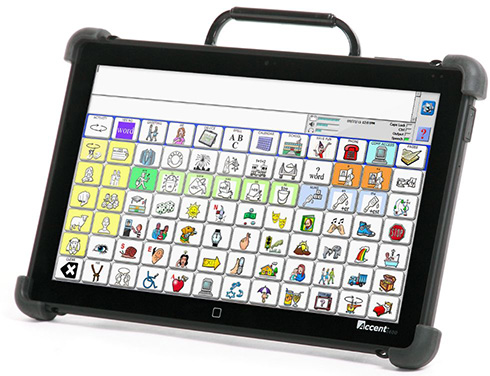Alternative & Augmentative Communication (AAC)

At one end of the scale, they may be paper based, at the other, they may be operated on a mobile phone or iPad.
AAC methods that don't use advanced computer technology include signing, gestures, written words, symbols and picture books.
AAC methods that employ the use of technology do so at varying levels of complexity. The majority of them focus on producing speech or text for a user who finds it difficult or impossible to produce this themselves.
This may be as simple as operating a switch to produce a pre-recorded message. However, systems can also offer computerised versions of symbol languages, which speak aloud the symbols selected. AAC technology is increasingly available on smaller, mobile devices, making it more practical in everyday life.
As a communication aid, an AAC device will be used constantly, so it must be chosen and tailored to the user to ensure it is the right one for them. An AAC specialist or speech and language therapy department may be able to help assess which kind of AAC device may be of the most use.
We work with our speech and language therapist and the Northamptonshire support team to assess student needs.
